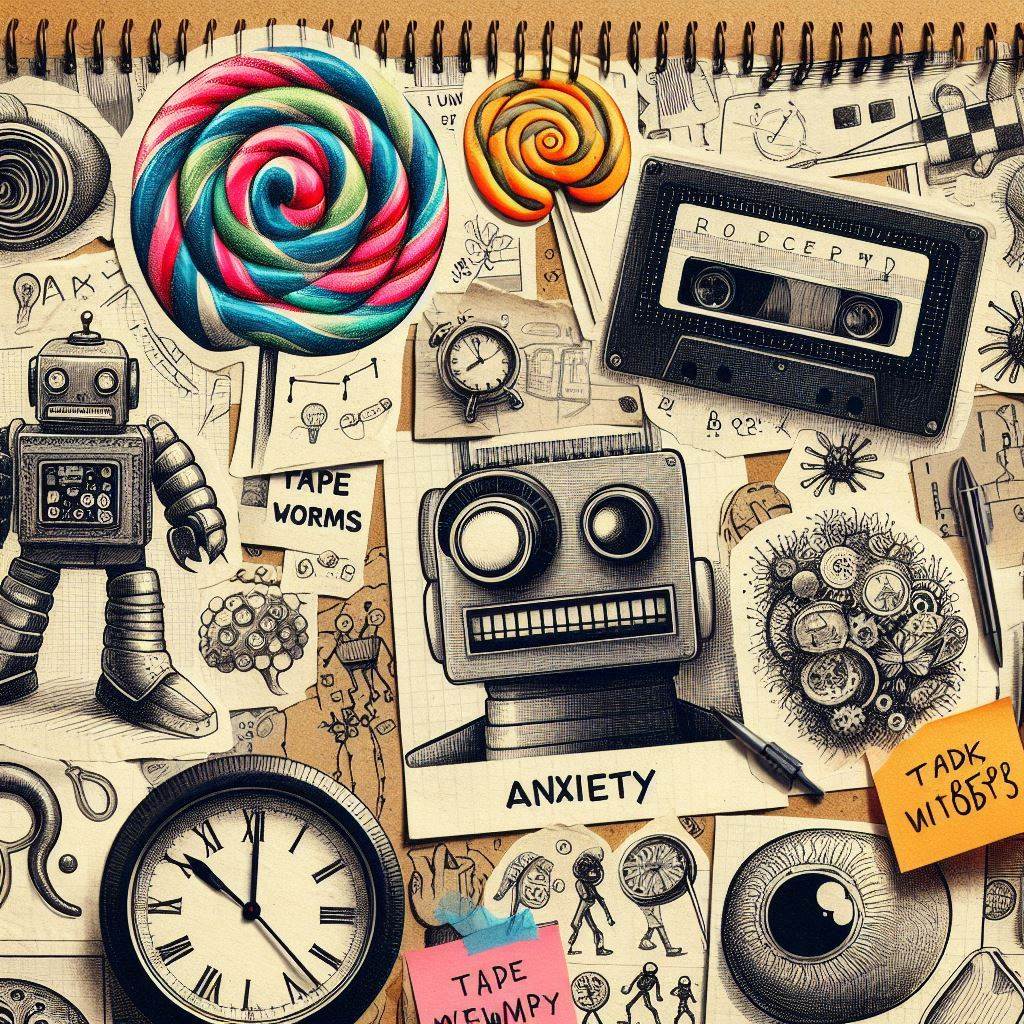Explore the link between creativity and anxiety. Learn how creative acts calm the mind, disrupt anxious thoughts, and boost mental health and productivity.

Hey Friends! Feeling stuck? This week we’re exploring strategies to unlock creative potential. Let’s dive in.
Creativity and Anxiety
In her book, Beyond Anxiety: Curiosity, Creativity, and Finding Your Life’s Purpose, Martha Beck, a Harvard trained sociologist, explores the reciprocal relationship between creativity and anxiety. Here’s a gross oversimplification of her findings:
Anxiety inhibits creativity: When we perceive threats, our minds tend to narrow their focus, restricting our thinking and making us less receptive to new ideas.
Creativity alleviates anxiety: Creative acts shift our mental state into connectivity, problem solving, and play which disrupts anxious thought patterns into calm and flow states.
See Beck below discussing this concept on the Today Show.
https://instagram.com/p/DEi2jdMMa-i/
Takeaway: Creative acts are more than just a means of expressing yourself. They’re tools for mental wellbeing. Do you have a go to practice for when you’re feeling stressed?
Tapeworms and Lollipops
John Fox, of the YouTube channel BookFox, is a course creator and novel editor. I highly recommend his channel for anyone interested in writing fiction. In the video featured below, Fox explores the difference between criticism and praise. He states:
“Criticisms are like tapeworms. They stick with us, while compliments are like lollipops. They taste good in the moment, but then they vanish pretty quickly.”
While kind of gross, this analogy rings true. From an evolutionary standpoint, it was likely advantageous to conform to criticism or risk being thrown out of the tribe and have to fend for yourself. We’re much more attuned to negativity that could yield dire consequences than positivity that only maintains the status quo.
Today, the ability to spread negativity is easier than ever, though the reality is the consequences aren’t as grave as they once were. Be careful when consuming the opinions of others when it comes to your creative work.
Takeaway: When you’ve been conditioned to react in certain ways, those thought patterns become engrained in your mind. It requires intentional decision making to cultivate more beneficial thought processes.
Robot Anatomy
One of my favorite creative hacks is to call a mistake I’ve made a feature instead of a bug. I came across a perfect example of this recently on Substack Notes. , an artist who shares their sketch work online, wrote this:
“Easing into the process of learning anatomy by drawing robots, so that when the proportions look wonky, I can say it’s a design choice.”
See the original post below.
I absolutely love this!
By implementing a mental hack such as this, you grant yourself permission to practice your craft more, increase your number of reps, and create without self imposed limitations.
Takeaway: Doubting your ability gets in the way of practicing, which is ironically the only thing that will really improve your ability. If you find yourself troubled by self-doubt, try reframing your ‘mistakes’ as ‘unique design choices’ or ‘unexpected stylistic elements.’ This can help you embrace imperfection and continue to learn and grow.
Keep Showing Up
I read an amazing James Clear quote. It goes:
“If you keep showing up, you’ll almost certainly break through — but probably not in the way you expected. You need enough persistence to keep working and enough flexibility to enjoy success when it comes in a different form than you imagined.”
I experienced this firsthand while experimenting with sketching and collage. I’ve been super inspired by artists like and . While I wouldn’t consider my work anywhere near there’s, I’ve had a lot of fun scratching the surface of learning a new craft.
My first attempts at collage were… bad.
In my mind, I knew what I wanted them to look like: vibrant, daring, edgy, punk rock. Instead, they looked like elementary school kids homemade valentines.
But after a while, through trial and error, I stumbled upon something I didn’t hate. It was way different than the aforementioned artists’ work, and nothing like what I originally wanted it to be, but I liked it anyway. The Substack account felt similarly and shared it with their followers garnering me way more attention than I anticipated.
Takeaway: Stick with something long enough, with good intention, and you’ll discover something worthwhile, even if it’s not what you expected. In my case, I found joy in creating and unexpected validation from the art community, which motivates me to keep exploring.
Make It First
I’m adopting the post it note below, originally posted by , as my new motto. It reads:
Just make it exist first. You can make it good later.
It’s concise and rings true on so many levels. Too often, I’ve wasted time kicking around ideas without ever really doing anything with them.
Takeaway: Just as I learned with collage, part of “the process” is learning what doesn’t work before discovering what does. Embrace the initial messiness and trust that with continued effort, you’ll refine your ideas and create something truly meaningful.
One More Thing
Good things are better when shared. If you liked this, it would mean the world to me if you sent it to someone who might like it too.
I’ll see you in your inbox again next week.
Until then,
-Mike